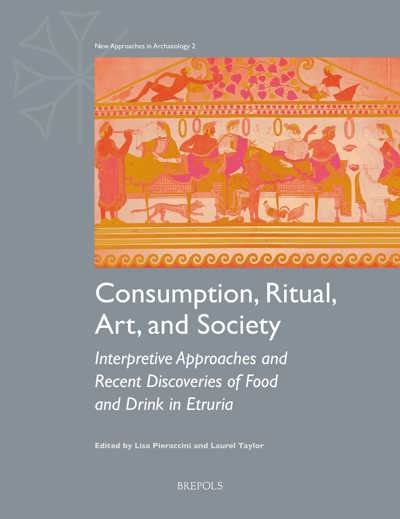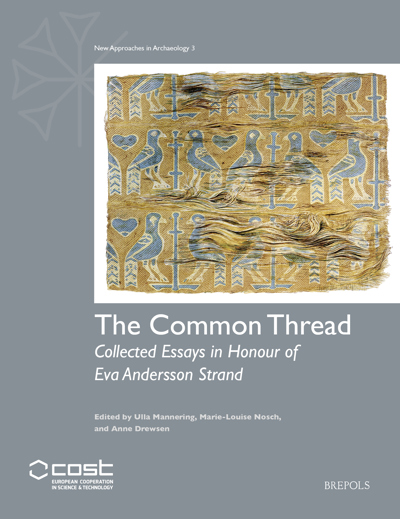
Alabaster
An Interdisciplinary Study of the Sources and Uses of Calcite Alabaster in Antiquity
Simon J. Barker, Simona Perna (eds)
- Pages: approx. 484 p.
- Size:216 x 280 mm
- Illustrations:260 b/w, 210 col., 30 tables b/w., 20 maps b/w
- Language(s):English
- Publication Year:2026
- € 165,00 EXCL. VAT RETAIL PRICE
- ISBN: 978-2-503-61066-5
- Hardback
- Forthcoming (Feb/26)
- € 165,00 EXCL. VAT RETAIL PRICE
- ISBN: 978-2-503-61067-2
- E-book
- Forthcoming
*How to pre-order?
This interdisciplinary volume will be the first of its kind, providing a standard reference point for alabaster in Antiquity and focusing on one material from source identification to quarrying and trade to its uses in architectural contexts and as artifacts and vessels.
Simon Barker completed his DPhil in Roman Archaeology at the University of Oxford and subsequently has held a number of post-doctoral fellowships in France, Italy and Germany. He is currently a fellow at the Norwegian Institute in Rome. His research focuses on recycling and the re-use of materials in the Roman and late-antique periods, as well as the use of stone as a decorative material in domestic structures in Campania and Italy.
Simona Perna completed her PhD in Roman Archaeology at Royal Holloway University of London and has held several associate lectureships in Classics and Classical Archaeology in the UK. Her post-doctoral research includes the project ‘Alabaster. Quarrying and trade in the Roman World’ with Simon Barker. Currently, she is a Research Associate at the Institut Català d'Arqueologia Clàssica (ICAC) in Tarragona (Spain).
With colours ranging from purest white to honeyed brown, texture of finest grains to undulating waves, and a translucent nature, alabaster has captured the imagination of patrons and craftsmen across the globe from prehistory to the present. Yet, while calcite alabaster has been one of the most sought-after decorative stones throughout history, many aspects of its procurement and use are less well known. This volume provides the first comprehensive study of calcite alabaster from a comparative, interdisciplinary perspective. The 21 chapters — contributed by geologists, archaeologists, and art historians — cover a wide range of topics, including the quarrying, scientific provenance, use, and imitation of this stone, from a wide chronological perspective (covering over 6000 years from the Predynastic Period to the early medieval period) and geographic context (from the Near East, across the Mediterranean basin, to the Iberian peninsula). This is followed by a gazetteer of known calcite-alabaster quarry sites that is designed to unify the data on the disparate sources and varieties of this stone. This important compendium includes the known calcite-alabaster sources from the most important quarries in the ancient world as well as less well-known quarries. Overall this volume provides an essential tool for researchers interested in this ubiquitous stone resource.
List of Illustrations
List of Contributors
Editors Preface
List of Abbreviations
Part I. Introduction
1. Calcite Alabaster: Scientific and Archaeological Perspectives
Simona Perna and Simon J. Barker
2.‘Alabaster’: Etymology, Geological Definition, and Terminology
Simona Perna, James A. Harrell, and Simon J. Barker
Part II. Quarry Location and Petrology
3. Egyptian Calcite Alabaster (Travertine): Ancient Quarries and Geology
James A. Harrell
4. A Flowstone (Calcite-Alabaster) Quarry in the Te’omim Cave, Jerusalem Hills
Boaz Zissu, Miryam Bar-Matthews, Ayala Amir, Uri Davidovich, Boaz Langford, Ro’i Porat, Micka Ullman, and Amos Frumkin
5. Calcite Alabaster From The Mārib Province, Yemen: Mining, Use, and Occurrences in the South Arabian Kingdom of Saba
Christian Weiß and Iris Gerlach
6. Ancient Calcite Alabasters in Tunisia: From their Extraction to their Uses
Ameur Younès
7. An Overview of the Calcite-Alabaster Quarries of South-Western Phrygia (Turkey): Characteristics of Extraction Areas and Exploitation
Giuseppe Scardozzi
Part III. Quarry Organization and Production
8. Hatnub: A Case-Study in the Archaeology of Egyptian Calcite-Alabaster Procurement in the Second and Third Millennia BC
Ian Shaw
9. Epigraphy and Archaeology from Quarry P, Hatnub
Yannis Gourdon and Roland Enmarch
10. Calcite-Alabaster Quarries in Roman Egypt: The Documentary Evidence
Alfred M. Hirt
Part IV. Scientific Analysis
11. A Multi-Method Approach for Determining the Provenance of Ancient Calcite Alabaster
Walter Prochaska, Simon J. Baker, Simona Perna, and James A. Harrell
12. Calcite Alabaster in Algeria
John J. Herrmann, Jr., Robert H. Tykot, and Annewies van den Hoek
Part V. Archaeological Evidence
13. Calcite Alabaster: Evidence for its Use and Trade in the Late Republican and Early Imperial Periods in Rome
Patrizio Pensabene
14. Some Thoughts on the Use of Calcite Alabaster in the Floors of Pompeii
Maria Stella Pisapia
15. Alabaster at Lepcis Magna, Tripolitania (Libya)
Matthias Bruno and Fulvia Bianchi
16. Fiorito Calcite Alabaster in the Roman Theatre of Cádiz (Gades, Baetica)
Aureli Àlvarez, Alicia Arévalo González, Darío Bernal-Casasola, Anna Gutiérrez Garcia-M., and Isabel Rodà
17. Archaeological Materials Made of Calcite Alabaster from the Roman Province of Hispania Baetica
María Luisa Loza Azuaga, José Beltrán Fortes, and Esther Ontiveros Ortega
18. The Red Calcite Alabaster of Carthago Nova: A Local Marmor at the Service of the Urban Elite
Begoña Soler Huertas
19. Not All Egyptian! Calcite-Alabaster Vessels in the Mediterranean Bronze Age: An Example of International and Reciprocal Influence
Hélène Bouillon
20. Calcite Alabaster in Cyprus
Efstathios Raptou
21. Ancient Gypsum- and Calcite-Alabaster Objects and their Imitations in Glass
Miguel Cisneros, Esperanza Ortiz, and Juan Á. Paz
Part VI. Alabaster Quarry Gazetteer
Introduction
Simon J. Barker and Simona Perna
1. Egypt
2. Turkey
3. North Africa
4. Italy
5. Spain
6. Israel and Palestine
7. Yemen
Works Cited




